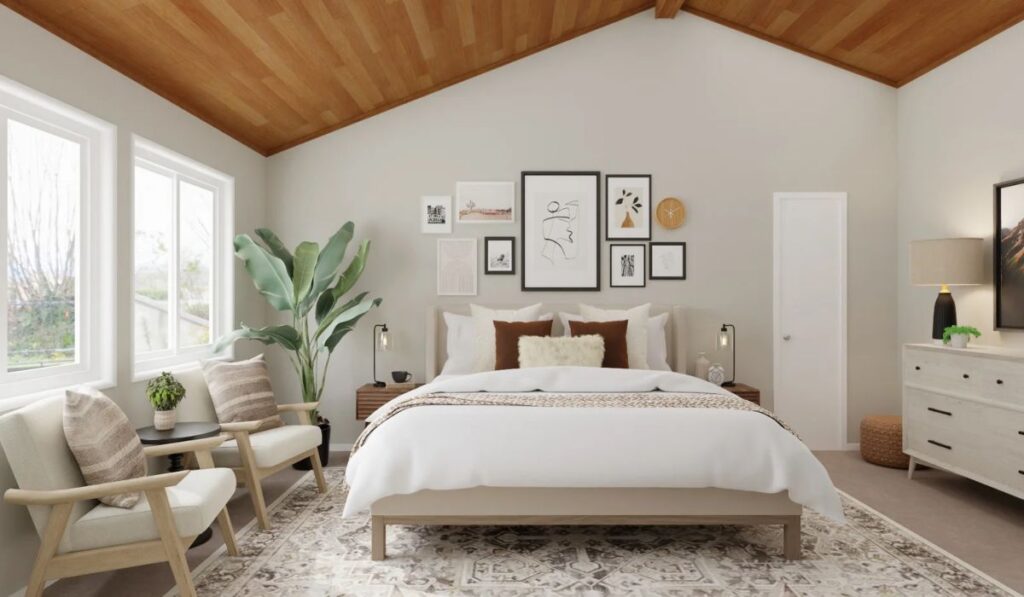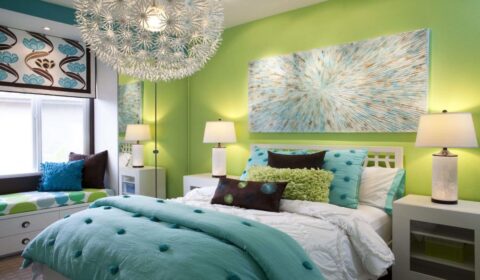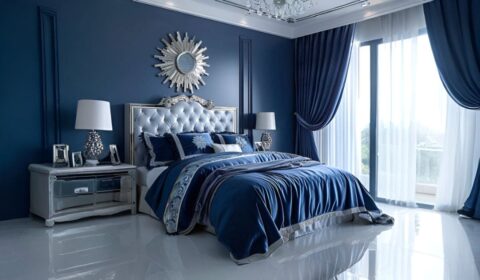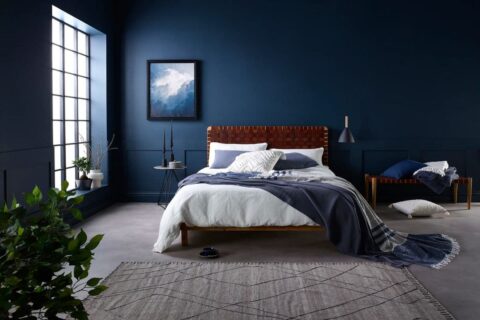The average size of a bedroom in the UK varies depending on property type and location.
- Small bedrooms: 6.5m² to 8.4m² (70 to 90 sq. ft.)
- Standard bedrooms: 8.5m² to 13.9m² (90 to 150 sq. ft.)
- Master bedrooms: 14m² to 20m² (150 to 215 sq. ft.)
- Luxury bedrooms: 20m²+ (215+ sq. ft.)
Urban homes typically have smaller bedrooms, while suburban and rural properties tend to offer more spacious layouts.
The size of a bedroom plays a significant role in determining its functionality, comfort, and overall usability. Whether buying a home, designing an interior space, or simply curious about standard bedroom dimensions, understanding the average bedroom size is crucial. Various factors such as location, type of property, and intended use influence the dimensions of a bedroom. In this detailed guide, we will explore the average size of a bedroom in the UK, factors affecting bedroom dimensions, and how to make the most of small and large bedroom spaces.
Standard Bedroom Sizes in the UK
In the UK, bedroom sizes vary significantly based on property type, age, and location. However, some general guidelines define small, standard, and large bedrooms.
Must Read: Can You Sell a House Before Probate Is Granted?
1. Small Bedrooms
- Dimensions: 6.5m² to 8.4m² (70 to 90 square feet)
- Common in: Older properties, apartments, and budget-friendly housing.
- Suitable for Single beds, minimalist furniture, and efficient storage solutions.
Small bedrooms are often used as children’s rooms, guest rooms, or home offices. To maximise space, they may require creative storage solutions such as built-in wardrobes, under-bed storage, and foldable furniture.
2. Standard Bedrooms
- Dimensions: 8.5m² to 13.9m² (90 to 150 square feet)
- Common in semi-detached and terraced houses and modern apartments.
- Suitable for Double beds, wardrobes, bedside tables, and essential furniture.
Standard-sized bedrooms are the most common in UK homes. They provide enough space for comfortable movement and essential furnishings without feeling cramped.
3. Master Bedrooms
- Dimensions: 14m² to 20m² (150 to 215 square feet)
- Common in: Detached homes, high-end apartments, and larger properties.
- Suitable for: King-size beds, en-suite bathrooms, wardrobes, and additional seating.
Master bedrooms offer ample space, often incorporating walk-in wardrobes or en-suite bathrooms for added convenience.
4. Luxury Bedrooms
- Dimensions: 20m²+ (215+ square feet)
- Common in: High-end homes, penthouses, and custom-built properties.
- Suitable for: Spacious layouts, additional furniture like lounge chairs, workspaces, and even dressing rooms.
These bedrooms provide a lavish feel with ample storage, seating areas, and sometimes a balcony or terrace.
Must Read: Average 2 Bedroom House Price in the UK
Factors Influencing Bedroom Size
The average size of a bedroom is influenced by various factors, including:
1. Property Type
- Flats and apartments typically have smaller bedrooms compared to houses.
- Detached houses tend to have larger master bedrooms than terraced homes.
2. Location
- Urban areas like London often have smaller bedrooms due to high property prices and limited space.
- Suburban and rural areas generally have larger bedrooms as space constraints are less severe.
3. Building Regulations
- UK building regulations set minimum space requirements for bedrooms to ensure liveability.
- A legally defined bedroom should have at least 6.5m² (70 square feet) of floor space.
4. Purpose of the Bedroom
- A guest or children’s bedroom may be smaller than a primary one.
- Homeowners often design bedrooms based on personal preferences and usage needs.
5. Age of the Property
- Older homes may have smaller bedrooms due to traditional space constraints.
- Modern constructions often prioritise open spaces and larger master bedrooms.
Must Read: Average 3 Bedroom House Price in the UK
Making the Most of Your Bedroom Space
Smart design and storage solutions can make any bedroom feel spacious and functional regardless of size. Here are some tips to maximise bedroom space:
1. Optimising Small Bedrooms
- Use multifunctional furniture like storage beds and wall-mounted desks.
- Incorporate vertical storage solutions such as shelves and hanging organisers.
- Choose light-coloured walls and mirrors to create an illusion of space.
2. Enhancing Standard-Sized Bedrooms
- Maintain a balance between furniture and walking space.
- Invest in built-in wardrobes for efficient storage.
- Use neutral tones and strategic lighting for an airy feel.
3. Maximising Large Bedrooms
- Divide the space into functional areas such as a dressing zone or workspace.
- Use rugs and furniture placement to define separate sections.
- Consider statement lighting and accent walls to add character.
Conclusion
The average size of a bedroom in the UK varies depending on factors like property type, location, and intended use. Small bedrooms range from 6.5m² to 8.4m², standard bedrooms from 8.5m² to 13.9m², and master bedrooms from 14m² to 20m². Luxury bedrooms exceed 20m², offering expansive living space.
Understanding these dimensions can help homeowners and buyers decide about property layouts, space utilisation, and furniture placement. Strategic design choices can ensure a comfortable and stylish living space, whether your bedroom is compact or grand.
Read More Blogs At: The Home Designer
Frequently Asked Questions
How big should a double bedroom be?
A standard double bedroom should ideally be at least 8.5m² (90 square feet) to comfortably accommodate a double bed and essential furniture.
Can a bedroom be too big?
While spacious bedrooms offer comfort, overly large bedrooms may feel empty and require additional furnishing to create a cosy atmosphere.
Are UK bedrooms smaller than in other countries?
Yes, UK bedrooms tend to be smaller than those in countries like the US and Australia, where larger plots allow for more expansive living spaces.
How can I make a small bedroom look bigger?
Use light colours, mirrors, smart storage solutions, and multifunctional furniture to maximise space and create an open feel.





